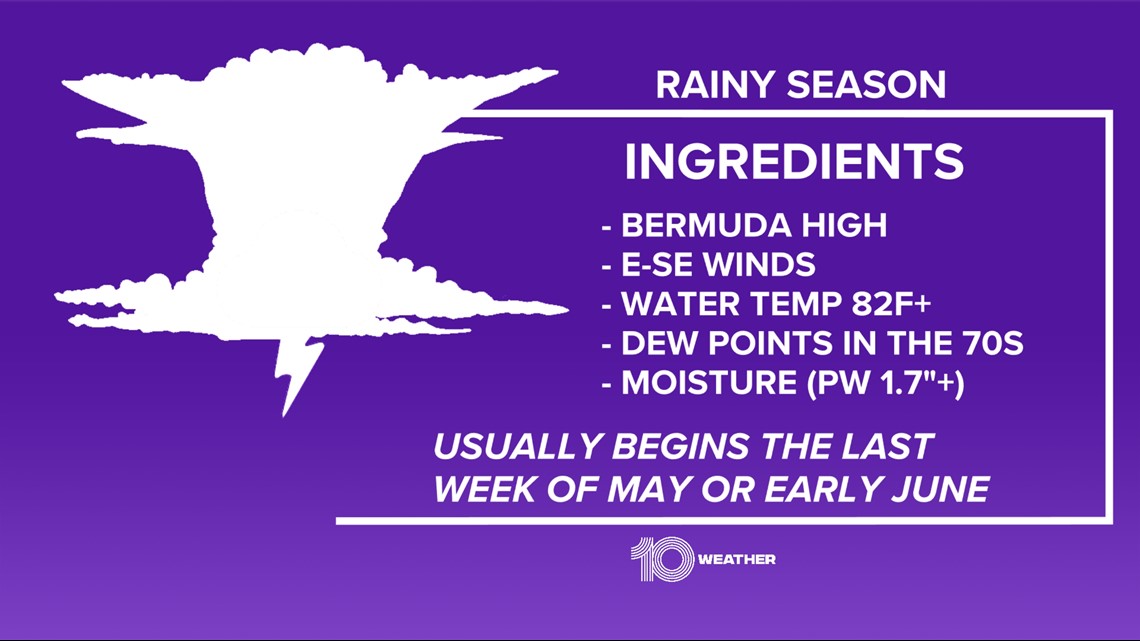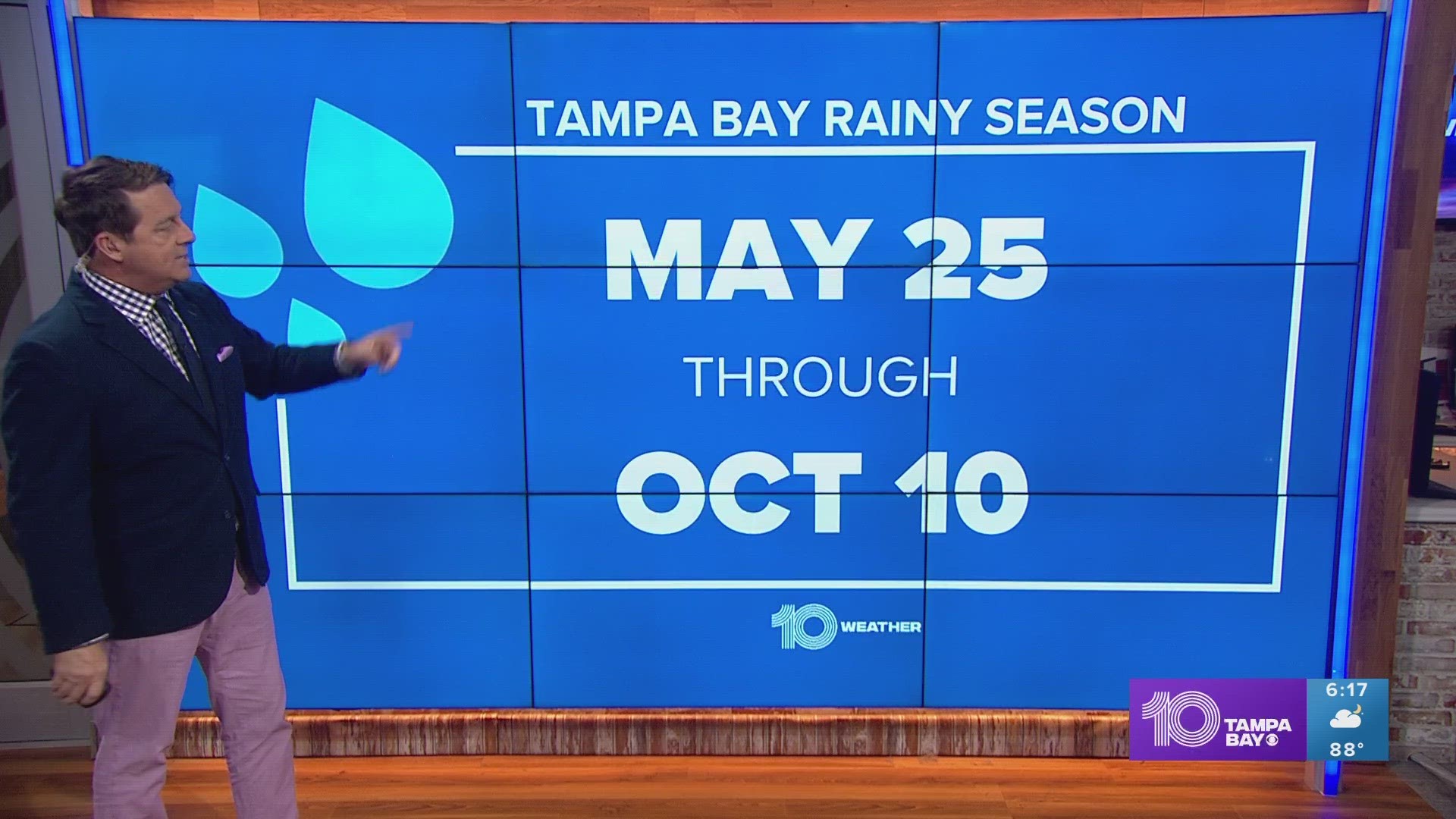ST. PETERSBURG, Fla. — As we approach the summer months in Florida, all eyes are on the arrival of hurricane season. However, this is also the time of year when our weather pattern gradually shifts from drier-than-normal conditions to wetter weather.
It's classified as the "rainy season."
For much of west Central Florida, including the Tampa Bay area, the start of the rainy season begins on May 25 and lasts through Oct. 10. According to the National Weather Service, "The rainy season can begin abruptly in some years and the onset can take weeks to develop in other years."
With that being said, Mother Nature doesn't follow the rules by the exact date on the calendar, but these dates represent the statistical dates where all the ingredients come together.


Technically, central Florida is working with most of the ingredients now, however, the PW (precipitable water) is still a little low.
For reference, precipitable water is a measure of the amount of moisture all the way up through a column of air. If you squeezed all of the moisture out of a meter-by-meter column and it totaled 1.7 inches, you'd have enough moisture to allow storms to form easily during the heating of the day.
The transition into this wetter pattern is definitely on the horizon, though.


If you're waiting on those summertime storms — they are right around the corner! Typically, from late May through June, we'll not only see more storms, but they will have a chance to quickly turn severe, prompting damaging winds, large hail and even waterspouts. This is also when we see heavy rainfall events and storms that can produce frequent lightning.
As for July and August, we've arrived at the peak of the season, where conditions take on more of a consistently hot, humid and wet pattern.
By September through early October, we remain wet, but the pattern turns less consistent, meaning a higher rain variability, both in rain chances and overall coverage. This is mostly due to the influence of potential tropical systems and early fall cold fronts.
It's important to remember, these dates represent a statistical trend in the region, and we can very well still experience significant rain events outside of the official rainy season.

